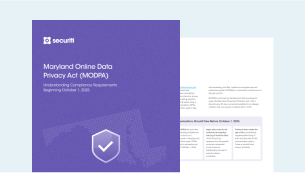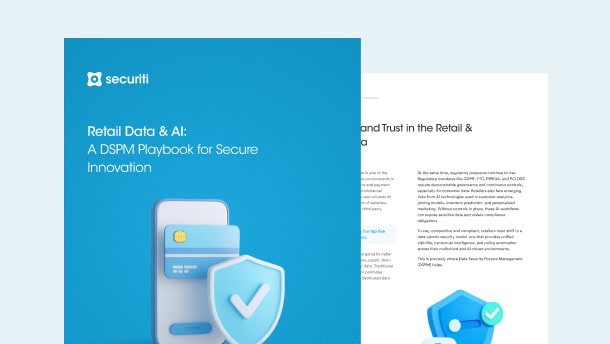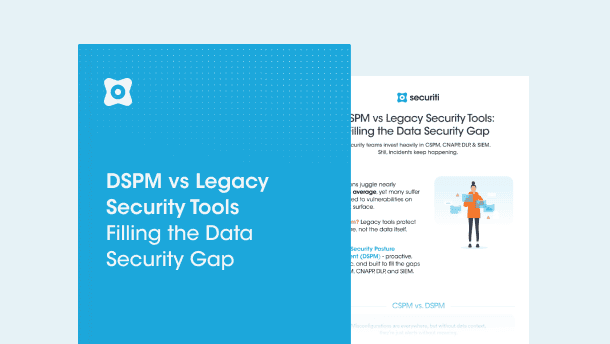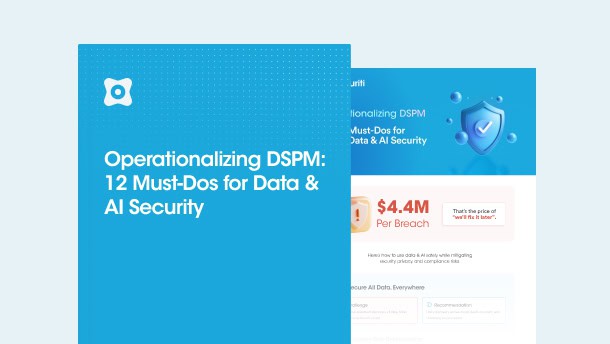How does Data Classification Work?
Data classification involves categorizing data based on its sensitivity, value, and regulatory requirements. This process is essential for managing data efficiently, protecting sensitive information, and ensuring compliance. Let's explore the different approaches and technical mechanisms that underpin data classification.
Approaches to Data Classification
Data classification can be approached in several ways, each with its benefits and challenges. Understanding these approaches helps organizations choose the most suitable method for their needs.
Manual Data Classification
This approach relies on human intervention to categorize data based on predefined criteria. Data stewards or IT personnel manually assess the content and context of data to assign appropriate classifications. While this method benefits from human intuition and the ability to recognize subtle contextual clues, it can be time-consuming, prone to error, and difficult to scale, especially when dealing with large volumes of data.
Automated Data Classification
Automated classification uses software tools and algorithms to categorize data without human intervention. This approach is highly efficient and scalable, utilizing pattern recognition algorithms to detect specific data formats, such as regular expressions identifying credit card numbers. Advanced systems employ machine learning (ML) and artificial intelligence (AI) to analyze data contextually, improving accuracy over time. Automated classification can process vast amounts of data quickly and consistently, with some ML models capable of classifying millions of emails in seconds, far surpassing human capabilities.
Hybrid Data Classification
This method combines manual and automated approaches, leveraging the strengths of both. Automated tools perform the initial classification, handling large volumes of data and identifying apparent patterns. Human reviewers then verify and refine the automated classifications, ensuring accuracy and addressing nuanced or context-specific data.
Technical Mechanisms Behind Data Classification
Data classification relies on several technical mechanisms to identify, categorize, and manage data effectively. These mechanisms include:
Data Crawlers and Scanners
These automated tools systematically browse data repositories to identify and classify data. Crawlers navigate through file systems, databases, and cloud storage, indexing data based on predefined patterns and criteria. Scanners examine file content to identify sensitive information, such as personally identifiable information (PII) or financial data. For example, a scanner might search for specific keywords or patterns indicative of sensitive content.
Metadata Analysis
Metadata provides crucial context about data, aiding in its classification. Attribute-based classification analyzes metadata like file type, size, and location to categorize data. For instance, documents stored in an HR folder might be automatically classified as internal or confidential. Metadata tags include details such as classification level, owner, creation date, and applicable regulatory requirements. These tags are essential for managing data efficiently.
Content Inspection and Deep Analysis
Deep content inspection and contextual analysis are advanced techniques used to better understand data. Deep content inspection involves scanning the actual content of files and documents to identify sensitive information. Contextual analysis goes beyond pattern matching by considering the surrounding context of data elements, such as identifying a Social Security Number based on adjacent text and typical document formats.
Machine Learning and Artificial Intelligence
ML and AI technologies play pivotal roles in modern data classification. ML models are trained on labeled datasets to recognize patterns and classify new data accurately, improving over time. AI systems continuously learn from new data inputs and evolving patterns, enhancing classification accuracy and adapting to changing data environments and regulatory landscapes.
Rule-Based Classification
Rule-based systems use predefined rules to classify data based on specific patterns, keywords, and regulatory requirements. Pattern matching identifies data based on specific formats, while keyword-based rules utilize specific terms to categorize data. Regulatory compliance rules ensure data is classified in accordance with legal requirements, such as GDPR or HIPAA.
Why Is Data Classification Important?
Data classification underpins effective data governance, security, and compliance strategies. It plays a critical role in how organizations manage, protect, and utilize their data assets, offering benefits that extend far beyond basic organization.
Enhanced Data Security
Data security involves protecting data from unauthorized access, breaches, and other cyber threats. By categorizing data based on sensitivity, organizations can implement tailored security measures to protect their most valuable information. This targeted approach allows for more efficient use of security resources, focusing the strongest protections on the most critical data. For example, sensitive data such as personally identifiable information (PII), financial records, and intellectual property can be classified as confidential or restricted. These classifications dictate stringent security measures such as encryption, access controls, and monitoring.
Regulatory Compliance
Regulatory compliance involves adhering to laws and regulations that govern how data is managed and protected. Different types of data are subject to various regulatory requirements. For instance, personal data is regulated under the General Data Protection Regulation (GDPR) in the European Union. At the same time, health information is governed by the Health Insurance Portability and Accountability Act (HIPAA) in the United States. Data classification allows organizations to identify which data falls under specific regulations and ensure that data is handled according to its sensitivity and legal requirements. This proactive approach can help avoid significant fines and penalties associated with non-compliance.
Risk Mitigation
Risk mitigation involves identifying and reducing potential threats to data security. By understanding what types of data they possess, where it resides, and categorizing data based on risk levels, organizations can prioritize their security efforts and allocate resources effectively. This knowledge is invaluable in developing comprehensive risk management strategies. For example, classifying trade secrets and intellectual property as high-risk data enables organizations to focus their protective measures on these critical assets, mitigating potential threats from cyber espionage and insider breaches.
Effective Data Management
Data management involves efficiently handling data throughout its lifecycle. By providing a clear structure for organizing, storing, and retrieving data, classification improves data literacy, enhances operational efficiency, reduces redundancy, optimizes storage costs, and ensures that data is easily accessible to authorized users. This streamlined approach supports better decision-making and operational agility, allowing organizations to leverage their data assets more effectively.
By implementing a robust data classification strategy, organizations not only protect themselves from potential threats and regulatory penalties but also position themselves to derive maximum value from their data assets in a secure and compliant manner.
What are the Types of Data Classification?
Data classification is a critical process in data governance and security, ensuring that data is handled according to its sensitivity and importance. There are three primary types of data classification:
1. Content-based Classification
Content-based classification analyzes the actual content of data to determine its classification. This method focuses on the inherent information within the data itself, such as keywords, phrases, or patterns that indicate its sensitivity or relevance. For example, a healthcare provider might classify patient records based on content like medical diagnoses and treatment plans. This method is particularly effective for identifying sensitive information embedded within unstructured data.
Techniques used in content-based classification include regular expression matching for structured data (e.g., credit card numbers, social security numbers), Natural Language Processing (NLP) for unstructured text, and image recognition for visual data. The benefits of this method are its high accuracy and adaptability to changing data content. However, it can be resource-intensive, especially for large volumes of data, and requires regular updates to classification rules to avoid false positives or negatives.
2. Context-based Classification
Context-based classification considers the circumstances surrounding the data's creation, use, or storage. This method focuses on metadata and environmental factors, such as the data's location, creator, access history, and associated permissions. For instance, a financial institution might classify emails containing sensitive financial information based on their metadata. Context-based classification is important for understanding the circumstances under which data is accessed and shared. By analyzing metadata and contextual information, organizations can apply appropriate security measures based on the data's usage patterns and access controls.
This approach provides a more holistic view of data sensitivity, capturing nuances that content-based classification might miss. Factors considered in context-based classification may include the data source (e.g., internal systems, third-party providers), the user or department that created the data, the intended audience or use case, and associated applications or business processes. While it provides a comprehensive view, this method may be challenging to implement consistently across an organization and may require updates as contexts change.
3. User-based Classification
User-based classification relies on individuals who create, modify, or handle data to determine its classification. This method empowers users to classify data based on their knowledge and understanding of its sensitivity and relevance. For example, researchers in a scientific organization might classify their proprietary research data based on its sensitivity and the potential impact of its disclosure. User-based classification is particularly useful for data that requires manual input for accurate classification.
This approach involves integrating classification tools with productivity software, providing user-friendly interfaces for classification selection. However, it is susceptible to human error or inconsistency and may lead to over or under-classification based on individual perceptions. User-based classification also requires comprehensive user training and ongoing education to ensure effectiveness.
The Benefits of Data Classification
Implementing data classification offers a myriad of benefits, allowing organizations to manage and protect their data more effectively. These advantages enhance data security and compliance while driving operational efficiency and cost savings.
1. Enhanced Data Security
Data classification provides a clear understanding of where sensitive data resides, enabling organizations to implement robust security controls. This minimizes the risk of data breaches and unauthorized access, protecting the organization’s most valuable assets.
2. Regulatory Compliance
Ensuring that sensitive data is classified and handled according to regulatory requirements allows organizations to demonstrate compliance with laws and standards. This not only avoids fines and penalties but also builds trust with customers and stakeholders.
3. Improved Risk Management
Classifying data enables organizations to identify high-risk data and prioritize its protection. This proactive approach to risk management helps prevent data loss, intellectual property theft, and other security incidents that could have severe consequences.
4. Operational Efficiency
Data classification streamlines data management processes, making it easier for employees to find and use the information they need. This reduces time spent searching for data, improves productivity, and enhances decision-making capabilities.
5. Cost Savings
Effective data classification helps identify unnecessary Redundant, Obsolete and Trivial (ROT) data that can be archived or deleted, reducing storage costs and freeing up IT resources. This cost-effective approach to data management allows organizations to invest in other critical areas.
6. Better Data Governance
Data classification supports better data governance by providing a structured approach to data management. It ensures that data policies and procedures are consistently applied across the organization, improving data quality and integrity.
7. Enhanced Data Analytics
With well-organized and classified data, enterprises can perform more accurate and insightful data analytics. This leads to better business intelligence, enabling organizations to make informed decisions and gain a competitive edge.
8. Efficient Cloud Migration
Data classification helps identify and categorize data before migrating to the cloud, ensuring that sensitive data is appropriately secured during and after the transition.
9. Support for Privacy Operations
Data classification is essential for managing personal data and supporting privacy operations such as DSARs, privacy impact assessments (PIAs), and data breach notifications. This is crucial for brand reputation and long-term business success.
Data Classification Levels
Data classification levels are essential for managing and protecting information according to its sensitivity and value to the organization. Each level has specific requirements and handling procedures. While specific levels may vary between organizations, a common framework includes:
1. Public Data
Public data refers to information that is freely available to anyone, both inside and outside the organization, without any restrictions. This data poses no risk if disclosed and is often used for promotional and informational purposes. It typically includes marketing materials, press releases, product information, and publicly available reports. Although this data does not require stringent security measures, it should still be managed to ensure accuracy and consistency.
2. Internal-Only Data
Internal-only data is information intended for use within the organization. It is not meant for public dissemination and is used to support internal operations and decision-making. This data typically includes internal memos, company policies, internal project documentation, and other information that, while not highly sensitive, should remain within the organization to avoid miscommunication or misuse.
3. Confidential Data
Confidential data refers to sensitive information that, if disclosed, could harm the organization or its stakeholders. This data requires robust protection measures to prevent unauthorized access. It may include financial records, trade secrets, customer information, and other critical business information. Protecting this data is vital for maintaining competitive advantage, complying with regulations, and safeguarding stakeholder interests.
4. Restricted Data
Restricted data is highly sensitive information that requires the highest level of protection. Unauthorized access to this data could result in severe consequences, including legal penalties and significant financial loss. It typically encompasses intellectual property, legal documents, personal identifiable information (PII), and other critical information. Protecting this data is essential for compliance with stringent regulatory requirements and for protecting the organization's most valuable assets.
5. Archived Data
Archived data is information that is no longer actively used but must be retained for regulatory, legal, or historical purposes. This data needs to be stored securely but does not require frequent access. It may include old financial records, past employee records, and historical project files. Retaining this data is necessary for compliance with legal retention requirements and for preserving organizational history.
Data Classification Challenges
Implementing effective data classification is not without its challenges. Organizations must navigate various obstacles to achieve accurate and efficient classification:
1. Volume of Data
The sheer amount of data that organizations generate, store, and manage makes classifying large volumes of information increasingly complex and resource-intensive. Organizations today deal with terabytes, petabytes, or even exabytes of data, making manual classification impractical. Automated tools are necessary to handle such vast amounts, but even these can struggle with performance and accuracy at scale. Automated classification tools with machine learning capabilities are necessary to handle such vast amounts.
2. Variety of Data Types
The variety of data types refers to the different formats and structures of data that organizations must classify. This includes structured data, semi-structured data, and unstructured data. Different data types require different classification approaches, making it difficult to maintain consistent classification across diverse data types. Structured data, like databases, can be easier to classify due to its predefined schema. In contrast, unstructured data, such as emails, documents, and multimedia files, presents more significant challenges due to its lack of a consistent format.
3. Data Velocity
Data velocity refers to the speed at which data is generated, processed, and needs to be classified. In fast-paced environments, such as financial trading or social media monitoring, data is generated at high speeds and needs to be processed in real-time. This requirement demands robust, high-performance classification systems that can keep up with the data flow without compromising accuracy.
4. Accuracy of Classification
Classification accuracy is the precision with which data is categorized according to its sensitivity and relevance. High accuracy is crucial for ensuring that sensitive data is properly protected and that the organization remains compliant with regulations. Inaccurate classification can lead to significant risks, such as exposing sensitive data or failing to comply with legal requirements. Over-classification (false positives) can result in unnecessary restrictions and hinder productivity, while under-classification (false negatives) can leave sensitive data vulnerable.
5. Siloed Classification Approaches
Siloed classification approaches occur when different departments or systems within an organization use inconsistent classification methods. This lack of standardization can lead to fragmented and inefficient data management. Siloed classification can result in discrepancies in how data is categorized and protected across the organization. This fragmentation complicates data governance and increases the risk of compliance failures. Unified data classification policies and centralized tools are necessary to address this challenge.
6. Keeping Classifications Current
Data sensitivity can change over time, necessitating regular reviews and updates to classifications. This ongoing maintenance can be resource-intensive, but failing to keep classifications current can lead to outdated classifications that result in over or under-protection of data, increased compliance risks, and inefficient use of security resources. To address these challenges, organizations should implement automated re-classification based on data usage patterns, schedule regular classification reviews—particularly for high-value data—and integrate classification updates into their data lifecycle management processes.
7. Keeping Pace with Evolving Regulations and Business Needs
One of the primary challenges of data classification is keeping pace with evolving regulations and business needs. As data protection regulations continue to evolve globally, organizations must continually adapt their classification schemes to remain compliant. This task becomes even more complex for multinational organizations dealing with cross-border data transfers, as different countries may have varying data protection requirements. Ensuring compliance with diverse regulations necessitates a flexible and dynamic classification system.
Data Classification Examples
Data classification is essential for protecting sensitive information and ensuring compliance with various regulations. Each data type requires specific handling and protection measures to safeguard against unauthorized access and misuse. Here, we examine specific examples of key data types to illustrate how data classification is applied in real-world scenarios to meet regulatory and operational needs:
1. PCI Data
Payment Card Industry (PCI) data refers to any information related to payment card transactions. Compromised PCI data can lead to significant financial loss and reputational damage for both businesses and consumers. The PCI Data Security Standard (PCI DSS) mandates the classification of credit card data to ensure its protection during processing, storage, and transmission.
Under PCI DSS, cardholder data is classified as highly sensitive. This includes:
- Primary Account Number (PAN)
- Cardholder Name
- Expiration Date
- Service Code
Compliance with PCI DSS is mandatory for any organization handling payment card transactions. It includes a wide range of security measures, such as encryption, access controls, and regular security assessments.
2. PHI Data
Protected Health Information (PHI) encompasses any information in a medical record that can identify an individual and is used during healthcare services. The Health Insurance Portability and Accountability Act (HIPAA) sets the standard for protecting PHI in the United States. PHI includes medical histories, lab results, insurance information, and other data that can identify a patient.
HIPAA classifies health information as protected when it includes identifiable information such as:
- Name
- Date of birth
- Social Security number
- Medical record number
- Health plan beneficiary number
HIPAA mandates that healthcare providers, insurers, and their business associates implement measures to ensure the confidentiality, integrity, and availability of PHI. This includes classifying patient records to safeguard them and ensure compliance with health privacy regulations.
3. PII Data
Personally Identifiable Information (PII) refers to any data that can be used to identify a specific individual. This valuable and sensitive information, if mishandled, can lead to identity theft, fraud, and other malicious activities.
PII is information that can be used to identify an individual, such as:
- Full name
- Social Security number
- Driver's license number
- Bank account number
- Passport number
Various laws and regulations, such as the General Data Protection Regulation (GDPR) and the California Consumer Privacy Act (CCPA), mandate the protection of PII. Organizations must implement comprehensive data protection measures to safeguard PII, including data classification, minimization, encryption, and respecting data subjects' rights, such as the right to access and delete their information. By classifying customer names, addresses, and social security numbers, organizations ensure these details are stored and handled securely.
Data Classification Use Cases
Data classification enables organizations to manage, protect, and utilize their data effectively. Here, we explore data classification across various data governance, security, and privacy use cases:
Data Security Use Cases
Data Security Posture Management and Loss Prevention
Data classification is critical for identifying sensitive data and applying appropriate controls to prevent unauthorized access and exfiltration. For instance, classification helps in configuring Data Loss Prevention (DLP) tools to monitor and protect sensitive data. Organizations might use DLP to prevent employee social security numbers from being emailed outside the organization. By classifying data based on sensitivity and confidentiality, they can reduce the risk of data breaches, enhance compliance, and improve visibility into data movement.
Access Control Management
Access control management benefits from data classification by allowing organizations to implement role-based access control (RBAC) aligned with data classification levels. This ensures users only have access to data necessary for their roles, enhancing data security through the principle of least privilege.
Data Minimization
Classification supports data minimization efforts by identifying unnecessary or outdated data that can be securely disposed of. For example, a company might classify and purge obsolete customer records, reducing storage costs and improving system performance. This practice not only ensures compliance with data retention regulations but also enhances data quality and operational efficiency.
Security Investment Decisions
Understanding the distribution of data across different sensitivity levels helps organizations prioritize security investments. By focusing resources on protecting high-value and high-risk data, companies can enhance their overall security posture. For instance, an insurance firm might allocate more funds to safeguard customer financial data, ensuring robust protection measures are in place.
Data Governance Use Cases
Cloud Migration and Management
For cloud migration, classification helps determine which data can be safely moved to the cloud and what additional security measures are needed. This ensures data is appropriately secured and stored across hybrid and multi-cloud environments. By classifying data before migration, organizations can reduce the risk of exposing sensitive data, optimize cloud storage costs, and maintain compliance.
Analytics and Business Intelligence
Data classification supports analytics and business intelligence by providing trusted, governed data for AI/ML models and data-driven insights. Classifying data ensures that high-quality, relevant data is used for analysis, improving the accuracy of predictive models and business decisions. For instance, a multinational company might classify sales data by region, product category, and time period to enable detailed analysis of sales trends and customer preferences.
Data Retention and Archiving
Data retention and archiving policies can be set based on data classification, supporting compliance with data retention laws and reducing storage costs. Classification aids in determining appropriate retention periods for different types of data.
Mergers and Acquisitions
During M&A activities, data classification assists in identifying sensitive and valuable data assets, aiding in due diligence processes. Conducting data classification audits as part of due diligence, identifying critical and sensitive data assets in the target company, and developing integration plans that maintain appropriate data protections, improve valuation accuracy, reduce the risk of data breaches during the transition period, and streamline the integration of data management practices.
Information Sharing
Data classification guides decisions on what information can be shared with partners, vendors, or the public, reducing the risk of inappropriate disclosure. For instance, a pharmaceutical company might classify research data to control access and ensure sensitive information is shared only with approved collaborators. This approach ensures that only authorized parties have access to specific data, safeguarding intellectual property and maintaining regulatory compliance.
Disaster Recovery Planning
By identifying critical data through classification, organizations can prioritize data recovery efforts in the event of a disaster. For example, a financial services firm might classify transaction data as critical, ensuring it is prioritized during recovery operations. This approach helps organizations restore essential functions quickly, minimizing downtime and financial loss.
Privacy and Compliance Use Cases
Compliance Management
Comprehensive data classification is required to demonstrate adherence to data protection regulations such as GDPR, HIPAA, and CCPA. This process involves identifying and categorizing data based on regulatory requirements, ensuring that it is handled appropriately. By classifying data, organizations can provide clear evidence of compliance during audits, reducing legal risks and potential fines.
Privacy and Subject Rights
Locating personal data to support Data Subject Access Requests (DSARs), consent management, and data minimization is essential for compliance with privacy regulations like GDPR and CCPA. Data classification enables organizations to efficiently identify and manage personal data, ensuring that individuals' rights are respected.
Compliance Audits
Data classification provides a clear framework for demonstrating compliance with various data protection regulations during audits. By maintaining up-to-date classifications and documenting data handling practices, organizations can present auditors with a clear, organized view of their data management strategies. This transparency reduces the risk of non-compliance findings and associated penalties.
The Data Classification Process
Data classification is a structured approach to managing and protecting data based on its sensitivity, value, and importance to an organization. This process involves several key steps designed to ensure that data is properly identified, categorized, and protected:
Step 1: Data Asset Discovery
Data asset discovery is the initial step in the data classification process, involving the identification of all data assets across the organization to create a comprehensive inventory. This step lays the groundwork for subsequent classification efforts. Organizations often possess vast amounts of data spread across various systems, including databases, file systems, cloud storage, SaaS applications, endpoints, and mobile devices. Data asset discovery tools scan these environments to locate and catalog all data assets, including structured data in databases and data warehouses, semi-structured data like XML and JSON files, and unstructured data in documents, emails, and multimedia files.
Identifying shadow IT assets—systems or applications running without formal oversight—is also critical. This comprehensive approach ensures that no data slips through the cracks, providing a complete picture of the organization's data landscape.
Step 2: Data Classification
Data classification involves categorizing data based on predefined criteria such as sensitivity, regulatory requirements, and business value. This step determines the appropriate security measures and handling procedures for each data category, ensuring that information is protected and managed correctly throughout its lifecycle.
During the classification process, data is typically sorted into categories such as Public, Internal, Confidential, and Restricted. Automated classification tools, often powered by AI and machine learning, analyze the content and context of data to apply the correct classification labels efficiently. These advanced tools can significantly reduce the time spent on data classification, allowing organizations to focus resources on higher-priority tasks.
Step 3: Data Labeling
Implementing the classification involves applying labels to data assets using metadata, headers, or watermarks. This ensures that data handling practices align with the assigned classification level, facilitating appropriate security and access controls. The classification tool must provide granular element-level labeling, such as name, phone number, and credit card number, followed by category-level labels like Public and Confidential. Utilizing AI and NLP algorithms based on data context can enhance accuracy. NLP tools classify data precisely by considering different contexts, such as data relationships, meanings, and intents.
Labels such as "Confidential," "Internal Use Only," or "Public" guide how data should be handled, accessed, and protected, ensuring sensitive information is secured against unauthorized access. For instance, an enterprise might label financial reports as "Confidential" to ensure only authorized personnel can access them. Consistency in applying labels across all data assets is essential to avoid confusion and maintain data integrity. Automated labeling tools can embed labels directly within files or database records, ensuring efficiency and reducing manual effort.
Metadata, essentially data about data, is generated by data classification tools after data labeling. Metadata enrichment involves adding contextual information to data, enhancing its understanding and management. This process includes details such as data origin, usage, retention policies, and security requirements, providing a richer context that makes it easier to manage and protect the data. For example, tagging customer data with location information ensures compliance with data residency laws, which is crucial for multinational corporations.
By enriching data with business, privacy, and security metadata, organizations can better contextualize its origin, usage, and associated risks. Metadata for an email, for instance, might include the sender, recipient, and date sent—details crucial for proper classification and management. This enrichment not only aids in regulatory compliance but also enhances overall data governance and security.
Step 5: Data Cataloging
Data cataloging involves organizing classified and labeled data into a searchable catalog, serving as a central repository for data assets. This process enhances the ease with which users can find, understand, and manage data, supporting data governance, ensuring compliance, and improving operational efficiency. For instance, a global retailer might maintain a data catalog that includes all sales data categorized by region and product line, facilitating quick and easy access for analysts. This structured approach is akin to a library index, where classified data is centrally organized, making it straightforward for users to locate and utilize the necessary information.
To maximize the effectiveness of a data catalog, it's essential to implement best practices such as user training and regular updates. Training ensures that employees know how to search and utilize the catalog effectively, while regular updates keep the catalog current, reflecting new data assets and changes in classification.
Examples of Data Classification Compliance Standards and Regulations
Several regulations impact data classification practices, including GDPR, HIPAA, PCI DSS, SOX, and GLBA. Each has specific requirements that influence how organizations classify and protect data.
General Data Protection Regulation (GDPR)
The General Data Protection Regulation (GDPR) is a comprehensive data protection law enacted by the European Union (EU) to protect the personal data of EU citizens. This regulation applies to all organizations processing the personal data of EU residents, regardless of the organization's location. GDPR mandates strict guidelines for the collection, processing, and storage of personal data, requiring organizations to classify personal data to ensure it is handled appropriately. Key principles of GDPR include data minimization, accuracy, integrity, and confidentiality, along with granting individuals rights such as access, rectification, and erasure of their data.
To comply with GDPR, organizations must identify and classify all personal data, implementing stricter controls for sensitive personal information. This classification supports GDPR's requirements for data subject rights, such as the right to erasure. Organizations are also required to implement appropriate technical and organizational measures to protect personal data, ensuring that classification efforts align with GDPR's mandates for data minimization and purpose limitation. Non-compliance with GDPR can result in substantial fines of up to €20 million or 4% of the company's global annual turnover, whichever is higher. This highlights the critical importance of robust data classification and protection strategies for any organization handling the personal data of EU residents.
Health Insurance Portability and Accountability Act (HIPAA)
The Health Insurance Portability and Accountability Act (HIPAA) is a US law designed to protect the privacy and security of health information. It applies to healthcare providers, insurers, and their business associates and sets standards for the classification and protection of Protected Health Information (PHI). HIPAA mandates that organizations classify PHI to ensure it is safeguarded and only accessible by authorized personnel.
Under HIPAA, PHI includes any information that can identify a patient and relates to their health, such as medical record numbers, health plan beneficiary numbers, and biometric identifiers. Classification involves grouping data based on its sensitivity: restricted or confidential data requires the highest level of security and controlled access; internal data needs reasonable security controls and is not for public release; and public data must be protected against unauthorized modification or destruction.
To comply with HIPAA, organizations must implement administrative, physical, and technical safeguards to maintain the confidentiality, integrity, and availability of PHI. This includes stringent controls for electronic PHI (ePHI) and ensuring that classification supports HIPAA's privacy and security rules. By properly classifying PHI, healthcare organizations can protect patient information, comply with regulations, and reduce the risk of data breaches.
Payment Card Industry Data Security Standard (PCI DSS)
The Payment Card Industry Data Security Standard (PCI DSS) is a set of security standards designed to protect payment card information. This standard applies to any organization that handles credit card transactions, requiring them to classify and secure cardholder data to prevent breaches.
Organizations must classify payment card information to implement the necessary security measures. This process involves identifying and categorizing cardholder data, such as credit card numbers, expiration dates, CVV codes, and PINs. By clearly identifying and classifying this data, businesses can ensure all instances of cardholder data are documented and secured within the defined cardholder environment. The Verizon 2020 Payment Security Report reveals that only 27.9% of organizations maintained full compliance with PCI DSS, highlighting the critical need for stringent data classification and protection practices.
PCI DSS requires strict controls for Primary Account Numbers (PANs) and other cardholder data elements, including data discovery processes, secure storage and transmission practices, and regular risk assessments. Compliance with PCI DSS not only helps prevent data breaches but also builds customer trust by demonstrating a commitment to protecting their payment information.
Sarbanes-Oxley Act (SOX)
The Sarbanes-Oxley Act (SOX) is a US law that protects investors by improving the accuracy and reliability of corporate disclosures. It applies to all publicly traded companies in the United States and sets stringent requirements for financial reporting and data protection. To comply with SOX, companies must classify financial records to ensure they are stored and handled securely, safeguarding them from unauthorized access and tampering.
SOX mandates strict controls over financial reporting, requiring organizations to classify financial data. This classification ensures that financial records are accurate, complete, and protected, supporting the integrity of corporate disclosures. By classifying financial data relevant to SOX compliance, companies can implement the necessary controls to maintain data integrity and support audit trails for all interactions with classified financial information. Non-compliance with SOX can result in severe penalties, including fines and imprisonment for company executives, underscoring the importance of robust data classification practices.
Gramm–Leach–Bliley Act (GLBA)
The Gramm-Leach-Bliley Act (GLBA) is a US law that mandates the protection of consumer financial information. It requires financial institutions to classify and secure customer data, ensuring privacy and security. Institutions must develop and maintain comprehensive information security programs that include safeguards for customer data, complying with GLBA's requirements.
GLBA impacts data classification by necessitating the categorization of all customers’ financial information. This classification supports the implementation of appropriate controls, compliance with the Safeguards Rule, and adherence to privacy notice and opt-out provisions. Financial institutions must clearly explain their information-sharing practices and provide opt-out options for consumers. Additionally, they must ensure personal information is secured and kept confidential.
The Federal Trade Commission (FTC) enforces GLBA, imposing significant fines for non-compliance. The law applies to banks, credit unions, securities firms, car dealerships, and retailers that collect and share personal information. By classifying data according to GLBA, financial institutions can ensure robust protection, maintain compliance, and build consumer trust through transparent practices.
International Organization for Standardization (ISO) Standards
The International Organization for Standardization (ISO) develops standards to ensure quality, safety, and efficiency. ISO/IEC 27001 is a key standard for information security management, providing a framework for establishing, implementing, maintaining, and continually improving an information security management system (ISMS).
ISO/IEC 27001 impacts data classification by requiring organizations to categorize data based on sensitivity and implement appropriate security controls based on risk assessments. This standard ensures that data classification processes are robust and effective, aligning with the organization's overall information security strategy. By following ISO guidelines, organizations can better manage and protect their information assets, reducing the risk of data breaches.
Organizations must align their data classification schemes with ISO's information classification guidelines, implementing controls as per ISO recommendations for each classification level. This alignment supports the overall ISMS, contributing to a coherent and effective information security strategy. Standards such as ISO 27001 and ISO 27002 provide detailed guidance on securing data according to its classification, ensuring comprehensive data protection and demonstrating a commitment to high standards of information security.
SOC 2
SOC 2, developed by the American Institute of CPAs (AICPA), is a framework for managing customer data based on five trust service principles: security, availability, processing integrity, confidentiality, and privacy. This framework underscores the importance of data classification in ensuring that service organizations meet SOC 2 requirements and maintain client trust.
To comply with SOC 2, organizations must classify and protect customer data according to these principles. This involves implementing controls that ensure data security, availability, integrity, confidentiality, and privacy. By properly classifying client data, service organizations demonstrate their commitment to proper data handling and adherence to SOC 2 standards.
SOC 2 compliance is important for service providers handling sensitive customer data, as it enhances trust and credibility with clients. Organizations must classify data relevant to SOC 2 trust service criteria and implement appropriate controls to ensure proper handling. This classification supports SOC 2 audit requirements, enabling organizations to effectively protect and manage customer data, thereby reinforcing their dedication to high standards of data security and privacy.
Creating Your Data Classification Policy
A comprehensive data classification policy is essential for effective data management and security. It ensures that data is categorized according to its sensitivity and value, allowing for appropriate handling and protection. This policy forms the cornerstone of an effective data management strategy, supporting the proper handling of sensitive information throughout its lifecycle.
1. Define Objectives
Start by clearly defining the objectives of your classification policy that align with organizational goals, regulatory requirements, and risk management strategies. By defining these objectives upfront, organizations can ensure their classification efforts support broader business and compliance initiatives. Objectives may include enhancing data security, ensuring regulatory compliance, and improving data management efficiency. Engage key stakeholders such as IT, legal, compliance, and business units in the policy development process to ensure it addresses all relevant aspects and aligns with organizational needs.
2. Establish Classification Levels
The policy must establish well-defined classification levels, each with specific criteria for categorization. Define your classification levels based on sensitivity, business value, and regulatory requirements. These levels typically range from public information to highly restricted data, with clear guidelines on what constitutes each category. For each level, provide clear definitions, examples of data types, and an assessment of the potential impact if the data is compromised. This clarity helps employees make consistent and accurate classification decisions across the organization.
3. Set Classification Criteria
Develop specific criteria for assigning data to each classification level. Consider factors such as data type, potential risks, legal obligations, and required protection measures. Use decision trees or flowcharts to aid in classification decisions, ensuring both content-based and context-based criteria are included for a comprehensive approach.
4. Assign Roles and Responsibilities
Assigning roles and responsibilities is another critical component of the policy. Clearly define roles and responsibilities for classifying data, maintaining classifications, and enforcing the policy. Key roles might include Data Owners, who make classification decisions; Data Custodians, who implement and maintain controls; and Data Users, who handle data according to its classification. Data owners, custodians, and users should understand their specific duties in the classification process. This clear delineation of responsibilities ensures accountability and promotes a culture of data stewardship throughout the organization.
5. Outline Handling Procedures
Detailed handling procedures for each classification level form the policy's operational core. These procedures should cover aspects such as access controls, storage requirements, transmission methods, and disposal protocols. By providing specific guidance for each data category, organizations can ensure consistent and appropriate data handling practices.
6. Define Labeling Methodology
The policy should also address labeling requirements and methods. Consistent labeling of classified data, whether through metadata, headers, or other means, is essential for effective data management and protection. This labeling enables automated systems to enforce security controls and helps users quickly identify the sensitivity of the information they are handling.
7. Implement Strong Access Controls
Implement role-based access controls (RBAC) to restrict data access based on classification, ensuring that only authorized users can access sensitive data. Define clear user roles and permissions to ensure that only authorized personnel can access sensitive data. Implement multi-factor authentication for accessing sensitive data to enhance security, adding an additional layer of protection and reducing the risk of unauthorized access.
8. Train Employees
The policy should clearly stipulate training requirements for all employees. A well-informed workforce is required for the success of any data classification initiative. The policy should outline both initial and ongoing training programs, ensuring that all staff members understand their role in protecting sensitive information. In addition, run ongoing awareness programs to reinforce the importance of data classification and encourage adherence to policies.
9. Regular Review and Updates
Regular review and reclassification procedures are key for maintaining the relevance and effectiveness of the classification system. As data sensitivity can change over time, the policy should outline processes for periodic reviews and updates to classifications. This dynamic approach ensures that data protection measures remain appropriate as business needs and regulatory landscapes evolve.
10. Ensure Compliance and Enforcement
Finally, the policy must include audit and compliance measures, as well as incident response procedures for potential breaches of classified data. These elements ensure that the organization can monitor the effectiveness of its classification efforts, demonstrate compliance with regulators, and respond swiftly and appropriately to any data security incidents.
8 Steps for Effective Data Classification
Implementing best practices and following a comprehensive data classification process will help safeguard sensitive information and support strategic business objectives.
Establish Classification Policy
Organizations should begin by establishing a clear, comprehensive policy that serves as the foundation for all classification efforts. This policy should reflect the organization's unique data landscape, regulatory obligations, and risk tolerance. By starting with a well-defined framework, companies can ensure consistency and clarity throughout the classification process.
Automate Classification
Implement automated classification tools to handle large volumes of data efficiently and accurately. Tools like Securiti’s automated classification system streamline the process and enhance accuracy. Leverage AI and machine learning algorithms to improve classification accuracy and adapt to new data patterns. These technologies analyze data contextually, reducing false positives and enhancing precision.
Involve Data Owners
Involving data owners in the review and refinement process adds a critical layer of accuracy to the classification effort. These individuals possess intimate knowledge of the data's content, context, and value to the organization. Their input can help fine-tune automated classifications and resolve ambiguities, ensuring that each piece of data receives the appropriate level of protection.
Ensure Consistency
Standardize labeling and classification processes across the organization to maintain consistency. Develop clear guidelines for applying labels and ensure all departments adhere to them. Manage the classification process centrally to ensure uniformity and compliance, reducing confusion and improving data management.
Implement Security Controls
Apply appropriate security measures such as encryption and access controls to protect classified data. Use strong encryption standards (e.g., AES-256) for restricted and confidential data to ensure it remains secure. Regularly review and update security measures to adapt to evolving threats and regulatory requirements.
Conduct Regular Training
Comprehensive employee training forms another cornerstone of effective data classification. This training should go beyond simply explaining classification categories; it must instill a deep understanding of the importance of data protection and each individual's role in maintaining it. Tailor training programs to different roles within the organization to ensure relevance and effectiveness.
Maintain Detailed Documentation
Keep detailed documentation of classification criteria, processes, and policies. Ensure documentation is easily accessible to relevant stakeholders. Regularly update documentation to reflect changes in policies, data usage, and regulatory requirements. This ensures that documentation remains relevant and supports effective data classification practices.
Continuous monitoring and regular audits are essential for maintaining the integrity of the classification system over time. These processes help identify misclassified data, detect potential security breaches, and ensure ongoing compliance with internal policies and external regulations. By regularly assessing the effectiveness of their classification efforts, organizations can quickly adapt to changing circumstances and emerging threats.
Securiti Sensitive Data IntelligenceTM (SDI) goes beyond basic data discovery to help organizations accurately classify data and get rich data context, including security and privacy metadata. For e.g., with Securiti, the privacy team can leverage metadata context to identify people owners of a PII data element quickly. SDI delivers the shared data intelligence context for data security, privacy, governance, and compliance teams, enabling them to automate all controls while reducing the cost and complexity of not operating multiple data classification tools across teams and cloud siloes.
How Securiti’s SDI helps:
- Broadest Coverage of clouds and data systems
- Designed for Hyperscale
- Higher data classification efficacy
- Common taxonomy across hybrid multi-cloud and SaaS
- Data classification at rest and in motion
- Integrated data security, governance, compliance, and privacy management
- Flexible deployment models
Sign up for a demo to learn more about Sensitive Data Intelligence.
Conclusion
In today's data-driven world, effective data classification is no longer optional—it's a necessity. It forms the foundation for effective data governance, security, and compliance strategies. By implementing a robust data classification strategy, organizations can enhance their data security, streamline compliance efforts, and unlock the full value of their data assets.
As the volume and complexity of data continue to grow, manual classification methods become increasingly inadequate. Automated solutions like Securiti's Sensitive Data Intelligence offer a path forward, providing the scalability, accuracy, and efficiency needed to automate and optimize your efforts. With the right approach and tools, you can transform data classification from a challenging task into a powerful asset for your organization.
Remember, data classification is not a one-time project but an ongoing process. It requires commitment, resources, and the right tools. However, the benefits – improved security, enhanced compliance, and better data management – far outweigh the challenges.












































